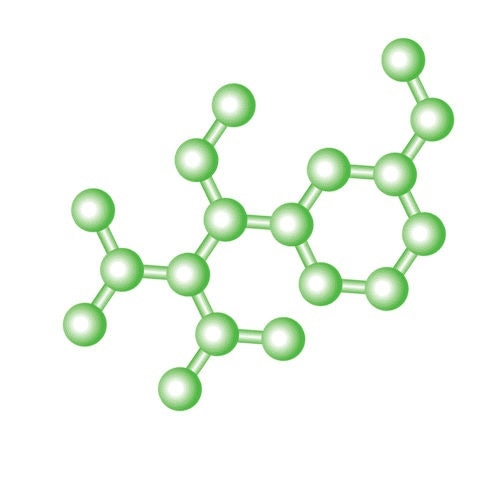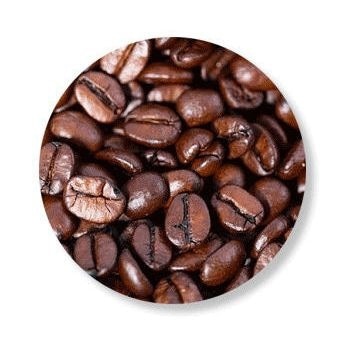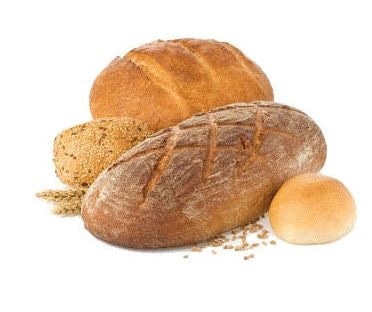Several cutting-edge applied research projects feature natural polymers and their derivatives; these include biofuels, nanopharmaceuticals, environmentally-friendly structural materials, and food science. One of the key methods of natural polymer characterization in terms of size, molar mass, and conformation is light scattering.
This article presents highlights of a few 2015 publications that used multi-angle light scattering (MALS) to study the structure, polymerization, and degradation of natural polymers. A topic of particular interest is their contribution to the consistency and texture of an uncommon mobile phase: beer.

Using MALS and DLS to Study Cellulose Material
As a raw material, cellulose is of great interest, due to its great abundance, specifically in waste products of paper and agriculture industries and also in recycled materials. In 2015, many publications described the use of dynamic light scattering (DLS) and MALS to study cellulose.
Cellulose Degradation
Dialdecellulose (DAC) shows much promise as a cellulosic derivative that can be converted into various forms with rich chemical properties.
Sulaeva et al. (Determination of molar mass distributions of highly oxidized dialdehyde cellulose by size exclusion chromatography and asymmetric flow field-flow fractionation, Cellulose 2015) used the Eclipse field-flow fractionation (FFF) system and a DAWN HELEOS II MALS detector to investigate cellulose degradation upon production of DAC in different conditions, and examined the benefits and drawbacks of SEC-MALS and FFF-MALS for such conditions.
In order to determine the aggregation states of DAC, a DynaPro NanoStar DLS detector was used in both on-line (integrated with the MALS detector and SEC separation) and off-line (batch, or cuvette-based) modes. Severe degradation was observed when DAC was heated for a prolonged period in different solvents, which was shown by changes in molecular weight distributions as indicated by aggregation and depolymerization.
The conformation plots of size vs. molecular weight indicated that SEC was very sensitive to the mobile phase because of polymer chain conformational changes. Although it required more effort than SEC, FFF displayed better separation efficiency. Batch DLS exhibited the formation and dissolution of microcrystalline DAC.
Chemical and Ultrastructural Changes in Cotton Cellulose
Palme et al. (Chemical and ultrastructural changes in cotton cellulose induced by laundering and textile use, Cellulose 2015) utilized SEC-MALS, NMR, intrinsic viscosity and other methods to monitor the changes in the structure of cotton cellulose caused by "wash and wear" to determine whether used textiles are suitable for recycling.
A reduction of about 10-fold in number-average and mass-average molar masses and an increase in polydispersity were observed after more than 50 laundry cycles, making the used material suitable to be recycled into another textile, viscose.

Aged Transformer Papers
Kes and Christensen (Degradation of cellulosic insulation in power transformers: a SEC-MALLS study of artificially aged transformer papers, Cellulose 2015) examined the aging of paper used for insulation in electrical power transformers.
Aging was accelerated when paper was exposed to high temperature. SEC-MALS exhibited a strong inclination of cellulose decaying to cause the shift to lower molecular weights. Degradation kinetics was investigated by periodically extracting and running aliquots.
SEC-MALS and MALDI-TOF Mass Spec
Inulin, a fructan found as a dietary fiber in leek, banana, garlic, and Jerusalem artichoke, is abundantly available in ryegrass and chicory root. As it can form gels and fiber, inulin finds application in food technology and is also used as an encapsulant in drug- delivery modalities such as pharmaceutical ingredients. On its own, inulin can also prevent many illnesses.
It is highly polydisperse and covers nearly three decades in molar mass from a few hundred g/mol up to tens of thousands, making it difficult to characterize with a single technique.
Evans et al. (Determination of the degree of polymerization of fructans from ryegrass and chicory using MALDI-TOF Mass Spectrometry and Gel Permeation Chromatography coupled to multiangle laser light scattering, Food Hydrocolloids 2015) found that SEC-MALS and MALDI-TOF mass spectrometry (MS) provide an accurate and complete molar mass distribution.
While MS enables high-resolution analysis of small oligomers, MALS increases the coverage of macromolecules more than that is possible by MS.

A natural polymer may not always be completely natural. Nelson et al. (Free Radical Polymerization of Caffeine-Containing Methacrylate Monomers, J. Poly. Sci. 2015) constructed copolymers from caffeine methacrylate and 2-ethylhexyl methacrylate to harness some benefits of the complexity present in naturally occurring polymers.
SEC-MALS determined that polymerization can occur up to 40,000 g/mol molecular weight. The end product provided improved melt moduli and mechanical storage. It is expected that drinking cups made with the new copolymer will just need to be filled with hot water to provide the morning jolt.

High molecular weight polysaccharides (HMWP) ranging into the tens of millions of g/mol have applications in mineral processing, oil recovery, food, paint, paper, and pharmaceuticals. Such polysaccharides can be characterized by SEC-MALS, although the large but fragile biomacromolecules can degrade due to shear on the SEC column.
HF5-MALS
Pitkänen and Striegel (Polysaccharide characterization by hollow-fiber flow field-flow fractionation with on-line multi-angle static light scattering and differential refractometry, J. Chromatogr. A, 2015) determined that MALS coupled with hollow-fiber field-flow fractionation (HF5) displays a more accurate presentation of HMWP molar mass distributions than SEC-MALS.
The investigation was further borne out by comparing with off-line DLS. Additional benefits can be expected from HF5-MALS for such heavy polysaccharides.
Wang and Wang (Molecular Weight Characterization of High Molecular Weight Dextran with Multiangle Light Scattering in On-Line and Off-Line Mode, Biopolymers 2015) used Composition-gradient multi-angle light scattering (CG-MALS) and SEC-MALS to assess shear degradation by comparing the weight-average molecular weights obtained from both methods.
A DAWN HELEOS, a Calypso II composition-gradient system, and an Optilab dRI detector were used for repetitive measurements of Zimm plots of HMWP. No change was shown in average Mw by smaller polysaccharide samples with weight-average molar masses of ~ 2 MDa.
However, it appeared as if samples with average values of ~ 90 MDa (determined through CG-MALS) lost a large amount of material and/or were decayed when passed though the SEC column. It was determined that degradation was caused by shear as the results partially relied on flow-rate. CG-MALS can be used to verify SEC-MALS data and can be used to reliably determine average molar mass if SEC-MALS is unsuitable.

FFF-MALS
FFF-MALS was used by Tügel et al. to choose beer options such as lager or porter (Analysis of polysaccharide and proteinaceous macromolecules in beer using asymmetrical flow field-flow fractionation, J. Inst. Brew., 2015). Beer is a complex mixture of macromolecules such as amino acids, proteins, polypeptides, and polysaccharides. It is derived by enzymatic degradation of cell walls and cytoplasm of cereals such as barley.
The proteins cause the foam found in beer, while viscosity and turbidity are a result of the presence of ß-glucans. The molar masses of these ingredients range from hundreds to hundreds of thousands of g/mol. So a method is required to simultaneously characterize and separate a broad range of macromolecules.
An Eclipse FFF system along with DAWN HELEOS, UV, and Optilab RI detectors helped to distinguish the macromolecular profiles of different types of porter and lager beers and their foams, pointing to the varying processing conditions and raw materials, and ultimately helping to choose the brew through reasoned scientific analysis. It is also possible that the authors simply used the traditional taste-testing.

Conclusion
These are but several of the many peer-reviewed articles on the characterization of natural polymers utilizing Wyatt instruments.

This information has been sourced, reviewed and adapted from materials provided by Wyatt Technology.
For more information on this source, please visit Wyatt Technology.